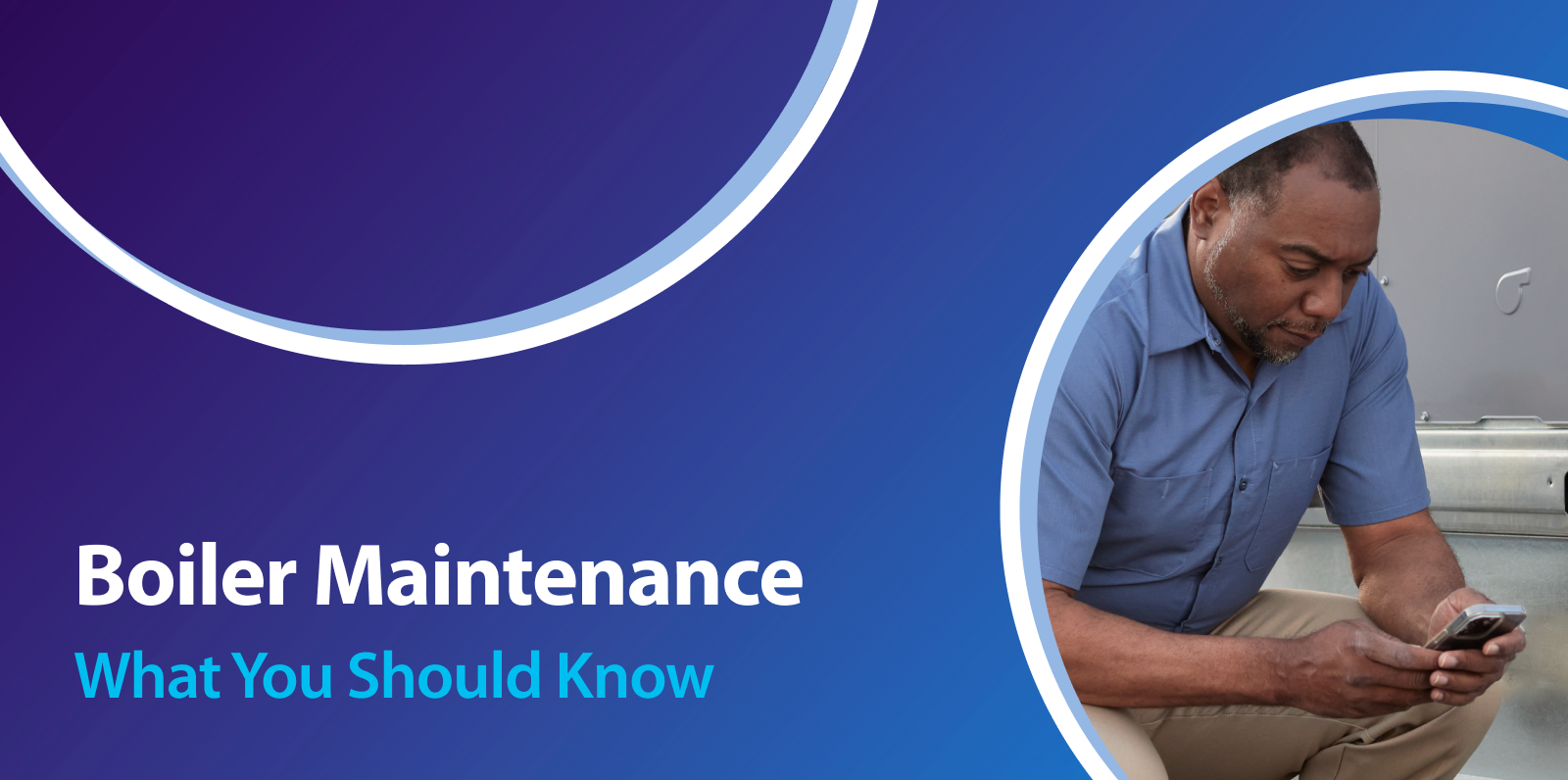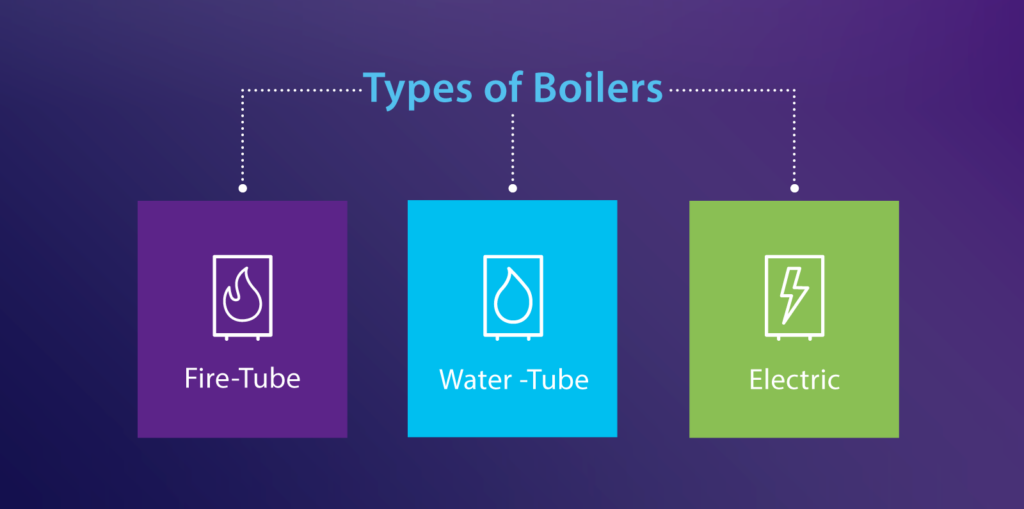Boiler Maintenance: What You Should Know

Learn about boiler types, components, and common issues. See how ServiceChannel’s computerized maintenance management system (CMMS) supports boiler maintenance.
Responsible for generating hot water or steam, boilers are often essential in commercial and industrial buildings. Whether you rely on yours to power industrial processes or to provide heat for your HVAC system, you can’t afford frequent, unexpected breakdowns. Fortunately, properly maintained boilers are much less likely to fail.
In addition, regular maintenance can improve safety, increase your boiler’s efficiency, extend its life, and save you money. This guide provides an in-depth look at the regular maintenance needed to reduce expensive repairs and support boiler safety.
Key Takeaways:
- Boilers require regular maintenance to operate safely and efficiently
- Fire-tube, water-tube, and electric boilers each have unique maintenance requirements
- Leaks, corrosion, scaling, and foaming are some of the most common issues that lead to necessary boiler repairs
- Improving maintenance operations contributes to overall better asset management, enabling you to make more informed decisions regarding capital planning and future expansions
- ServiceChannel’s computerized maintenance management system (CMMS) enables you to move beyond reactive maintenance to a predictive model that greatly reduces breakdowns and allows the system to work at peak performance

Types of Boilers
The type of boiler found in facilities varies depending on building needs. As a facility manager, knowing which systems are in place at your locations will help you evaluate routine maintenance requirements and create appropriate schedules to support optimal performance.
The three main types of boilers are fire-tube, water-tube, and electric. Here’s a look at the differences of each type and how their unique designs impact maintenance requirements.
Fire-Tube
Fire-tube boilers pass hot gases through tubes surrounded by water. Their design enables them to operate at a lower pressure and temperature than other types. Plus, fire-tube models have a horizontal arrangement that makes them easy for qualified technicians to access for service.
With this type of system, frequent cleaning is necessary to lower the likelihood of soot buildup within the tubes. If left unchecked, soot accumulation can reduce efficiency. Poor water quality can also be a concern with fire-tube systems, as impurities can contribute to corrosion and cracking.
Water-Tube
Water-tube boilers have an opposite design from fire-tube models. They feature glass tubes, which transport water through hot combustion gases. Consequently, they operate at a higher pressure and can produce steam more quickly.
Generally, water-tube systems are more complex and will often require servicing by a boiler expert. They need even stricter water quality controls to protect their components. Plus, their high-pressure operation increases stress on delicate components, such as valves and gauges. As a result, parts in water-tube systems often benefit from more frequent replacements.
Electric
Instead of combustion, electric boilers generate warmth via electric heating elements. They run very efficiently but require strict energy management to keep costs under control.
In addition, you’ll need to conduct thorough inspections of all electrical components regularly to minimize the risk of breakdowns. However, the lack of burners and combustion chambers still makes these systems relatively simple to maintain.
Critical Components of Boilers
To keep running efficiently and reliably, a boiler needs components in good working condition. Regular inspections of components can help you spot early warning signs of failure before they occur. Key components of boiler systems include:
Drum
Drums are water or steam reservoirs located at the upper end of a water tube in a boiler’s water pipes. They keep the steam within the water tubes and act as a phase separator for the steam-water mixture.
Headers
Boiler headers, also called manifolds, operate as outlets for hot fluids. It’s crucial to check headers because they can deform due to constant exposure to fluctuating temperatures and thermal stress.
Tubing
Tubing components transport hot water or gases within systems. Depending on the design, the tubes may be constructed of carbon steel, alloy steel, or glass.
Piping
Piping systems transport water into and out of boilers. They include:
- Flow pipe, which delivers water from the boiler to a radiator or heating system
- Return pipe, which brings cold water from the heating or radiator system back to the boiler
- Inlet pipe, which lets fresh water into some types of boilers
- Pressure relief pipe, which works with other safety controls to keep pressure within safe levels
Deaerators
Deaerators remove oxygen and other gases from pumpable and liquid components. They also protect steam systems from corrosive gases. They work by reducing dissolved oxygen and carbon dioxide levels.
Pressure Gauges
These components enable operators to monitor internal water or steam pressure levels. Abnormal readings can alert boiler technicians to potential leaks, blockages, or malfunctioning controls.
Safety Valves
When pressure reaches critical levels, safety valves automatically release to prevent significant damage to the system. These valves require regular inspections and calibrations to ensure safe operation.
Burners
Found in fire-tube and water-tube systems, burners mix fuel and air to facilitate combustion. They provide the heat for the gases or water that moves through the boiler system.
Common Boiler Issues
Neglecting maintenance can cause major issues with daily operations. An unexpected failure can interrupt workflows or make buildings unusable. Plus, repairs and emergency part orders often exceed the spend you’d expect for proper maintenance.
Failing to keep up with boiler preventative maintenance can lead to the following problems.
Leaks
An unchecked boiler leak can cause water damage to your facilities. The electrical components supporting the unit can also malfunction if they come into contact with dripping water. Some issues that can cause a leaking boiler include:
- Too much gas or water pressure
- Corrosion in tanks or pipes
- Seal leaks
- Other faulty components
Corrosion
Corrosion occurs when oxygen in the air or water reacts with the metal in your boiler components. Once oxidation begins, holes and cavities can form, eventually destroying the metal. Common causes of boiler corrosion include:
- Not conducting boiler maintenance
- Boilers getting exposed to dissolved gases in boiler water
- Oxygen or carbon dioxide in the boiler water
- Unbalanced water pH
Scaling
Boiler scaling occurs when impurities from heated water deposit on the surfaces of transport components. It leads to interference with heat transfer and the formation of hot spots.
Foaming
Contamination from steam and boiler-water solids can trigger the formation of bubbles or froth, also known as foaming. Foam may lower the efficiency of your boiler unit and can be detected with regular boiler maintenance.
Low Pressure
System leaks, a failed component, or other issues can lead to low boiler pressure. If the tension in your boiler isn’t high enough, it won’t function correctly.
Priming
Priming is the carryover that forms in steam droplets. When it lands on boiler components, priming leaves behind salt crystals that lower the energy efficiency of the steam. Leading causes of priming in a boiler are:
- Improperly constructed boilers
- Excessive ratings
- Fluctuating steam demands
Unusual Noises
Strange noises coming from a boiler often make people realize something might be off with their unit. Below are examples of unusual noises that can emerge from a boiler:
- Kettling (Banging or Clunking Noises): Limescale can form a barrier between your heat exchanger and boiler water. The sound happens when water boils up through the scale.
- Gurgling: Trapped air is the most common cause of this type of noise.
- Whistling: A lack of proper airflow can also cause this loud, high-pitched sound.
Boiler Maintenance ROI & Operational Benefits
Boilers are an essential part of facility heating systems. Investing resources in regular preventive maintenance can provide many operational benefits, including:
- Reduced downtime
- Lower utility bills and repair spend
- Improved compliance with refrigerant tracking regulations and safety standards
- Ability to make asset-specific insights to optimize your maintenance budget
- Closer boiler life cycle management
Maintenance Strategies
Completing a regular boiler maintenance checklist ensures that you don’t miss key service issues. However, developing and following a maintenance strategy can help you optimize your boiler’s performance over time. Some strategies to consider include:
Preventive Maintenance
Preventive maintenance is the routine service performed according to preset intervals. It seeks to reduce breakdowns by replacing wear-prone parts before they fail.
Predictive Maintenance
Predictive maintenance is an advanced strategy that uses historical performance data, sensors, Internet of Things (IoT) devices, and data analytics to predict failures before they occur. It involves continuously monitoring key performance indicators (KPIs), such as stack temperature, oil pressure, water levels, airflow, and levels of carbon monoxide and other substances in flue gases.
Small deviations from standard metrics automatically trigger work orders, allowing you to prevent leaks, priming, and other common problems. Predictive maintenance reduces parts and labor spend by basing service requests on the actual condition of equipment rather than on the average lifespan of parts.
Energy Optimization
Energy use accounts for much of the operational spend associated with boilers. An energy optimization maintenance strategy prioritizes ongoing monitoring of energy usage to spot issues that reduce efficiency and increase your organization’s utility costs.
As part of your optimization strategy, you could periodically run combustion-tuning and heat-recovery assessments. You might also regularly inspect insulation for signs of wear and tear that can make your boiler less efficient. ServiceChannel’s energy management tools empower you to track and optimize energy usage across all your locations, and they are agile enough to scale quickly as your organization evolves and expands.
Tools to Support Boiler Maintenance
The right maintenance management software can greatly simplify ongoing boiler maintenance. With ServiceChannel’s modern CMMS, you can automate repetitive tasks, including annual maintenance work order generation. Constant real-time monitoring helps you pay more careful attention to systems and can notify you before a boiler reaches a critical failure point.
What’s more, a CMMS links maintenance to asset management. By providing you with total asset visibility plus advanced analytics, you can do more than simply keep things running efficiently. Actionable data can inform key decisions, enabling you to seize opportunities for growth and cost savings and optimize operations for improved performance.
Stay Ahead of Your Preventative Maintenance With ServiceChannel
Keep track of your boiler maintenance checklists using the ServiceChannel platform. Our facility management software provides total visibility into the performance, status, and history of your boiler systems. Supported by machine learning, our system predicts boiler issues before they occur and recommends maintenance at the right time to keep systems working properly and at peak performance.
Learn how you can improve your boiler maintenance program with ServiceChannel by scheduling a demo today.



